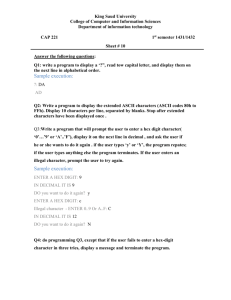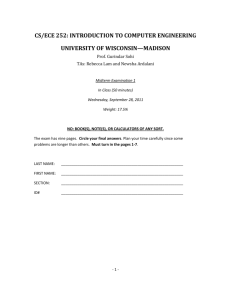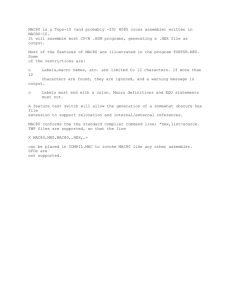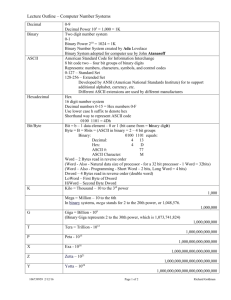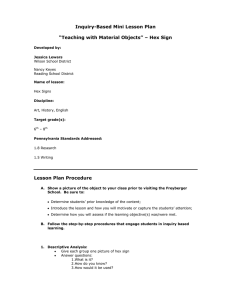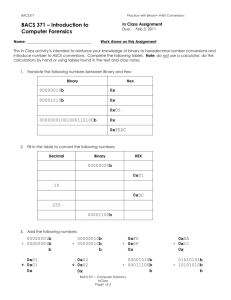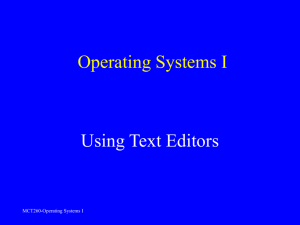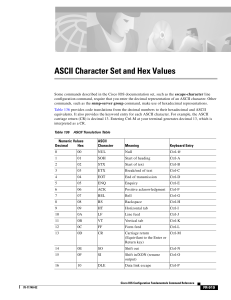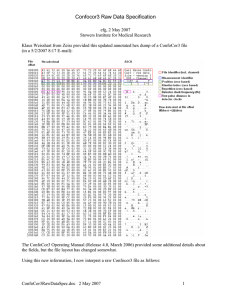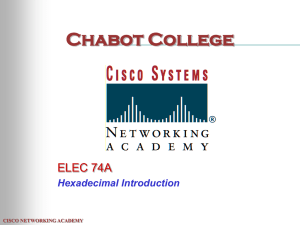Spring AY 14 6 Week Exam Objectives:
advertisement
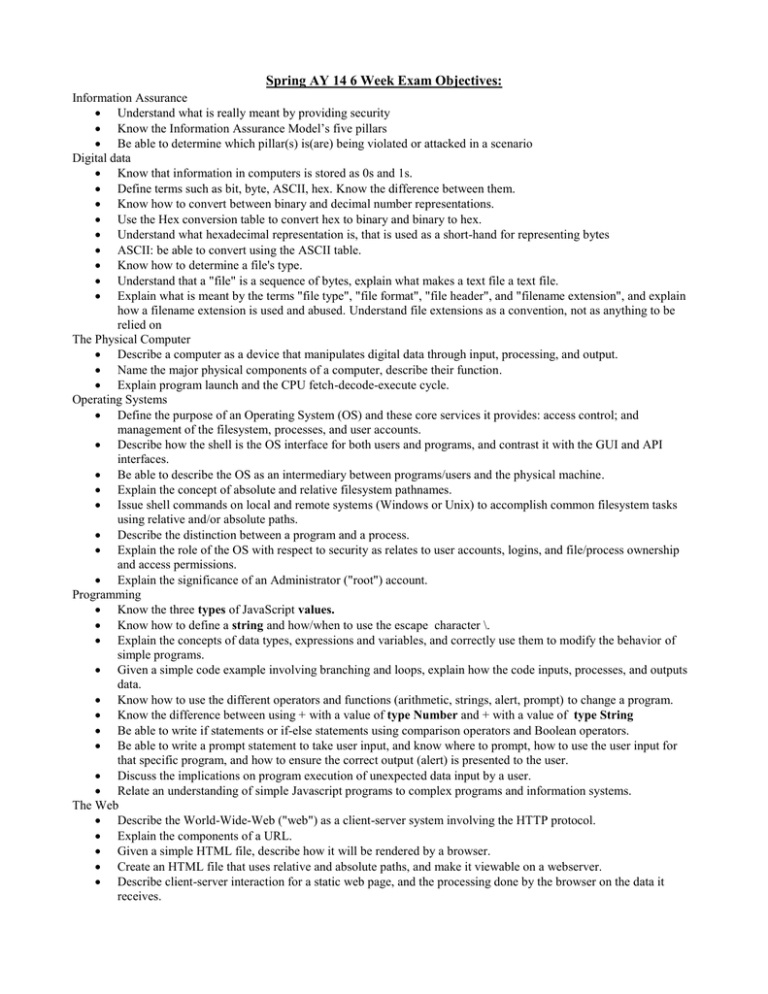
Spring AY 14 6 Week Exam Objectives: Information Assurance Understand what is really meant by providing security Know the Information Assurance Model’s five pillars Be able to determine which pillar(s) is(are) being violated or attacked in a scenario Digital data Know that information in computers is stored as 0s and 1s. Define terms such as bit, byte, ASCII, hex. Know the difference between them. Know how to convert between binary and decimal number representations. Use the Hex conversion table to convert hex to binary and binary to hex. Understand what hexadecimal representation is, that is used as a short-hand for representing bytes ASCII: be able to convert using the ASCII table. Know how to determine a file's type. Understand that a "file" is a sequence of bytes, explain what makes a text file a text file. Explain what is meant by the terms "file type", "file format", "file header", and "filename extension", and explain how a filename extension is used and abused. Understand file extensions as a convention, not as anything to be relied on The Physical Computer Describe a computer as a device that manipulates digital data through input, processing, and output. Name the major physical components of a computer, describe their function. Explain program launch and the CPU fetch-decode-execute cycle. Operating Systems Define the purpose of an Operating System (OS) and these core services it provides: access control; and management of the filesystem, processes, and user accounts. Describe how the shell is the OS interface for both users and programs, and contrast it with the GUI and API interfaces. Be able to describe the OS as an intermediary between programs/users and the physical machine. Explain the concept of absolute and relative filesystem pathnames. Issue shell commands on local and remote systems (Windows or Unix) to accomplish common filesystem tasks using relative and/or absolute paths. Describe the distinction between a program and a process. Explain the role of the OS with respect to security as relates to user accounts, logins, and file/process ownership and access permissions. Explain the significance of an Administrator ("root") account. Programming Know the three types of JavaScript values. Know how to define a string and how/when to use the escape character \. Explain the concepts of data types, expressions and variables, and correctly use them to modify the behavior of simple programs. Given a simple code example involving branching and loops, explain how the code inputs, processes, and outputs data. Know how to use the different operators and functions (arithmetic, strings, alert, prompt) to change a program. Know the difference between using + with a value of type Number and + with a value of type String Be able to write if statements or if-else statements using comparison operators and Boolean operators. Be able to write a prompt statement to take user input, and know where to prompt, how to use the user input for that specific program, and how to ensure the correct output (alert) is presented to the user. Discuss the implications on program execution of unexpected data input by a user. Relate an understanding of simple Javascript programs to complex programs and information systems. The Web Describe the World-Wide-Web ("web") as a client-server system involving the HTTP protocol. Explain the components of a URL. Given a simple HTML file, describe how it will be rendered by a browser. Create an HTML file that uses relative and absolute paths, and make it viewable on a webserver. Describe client-server interaction for a static web page, and the processing done by the browser on the data it receives.
